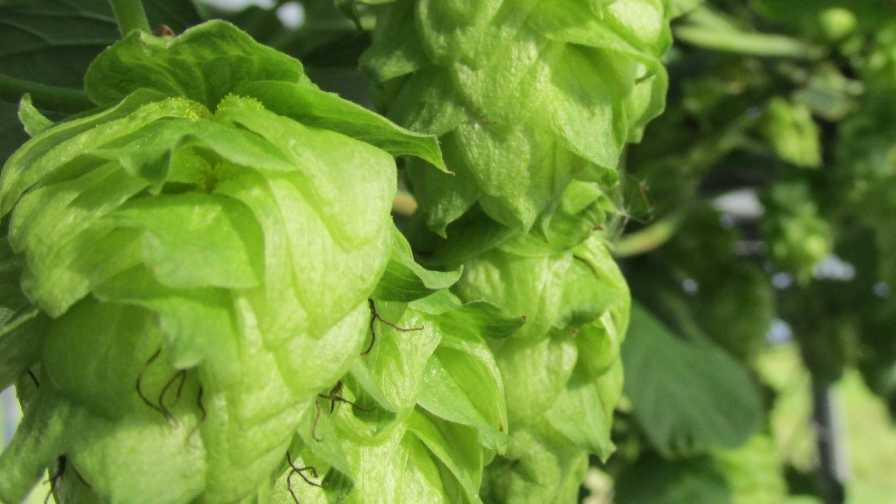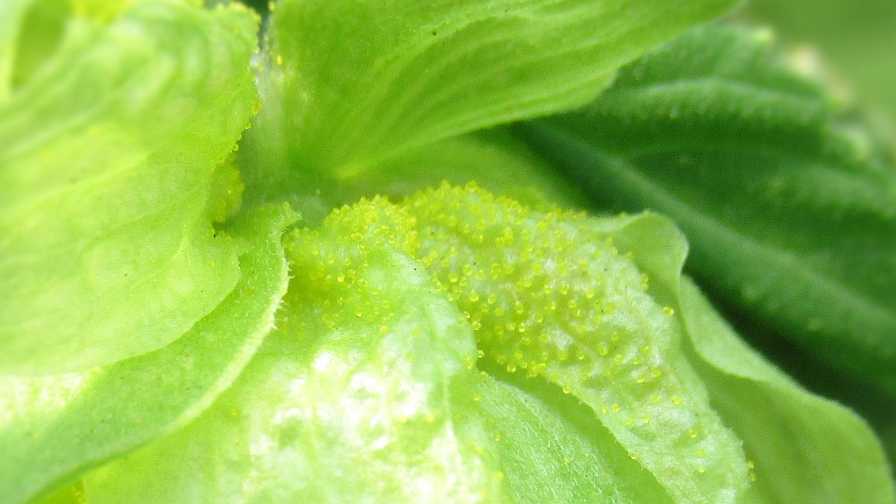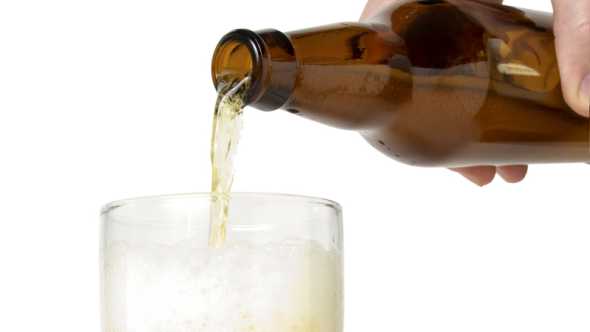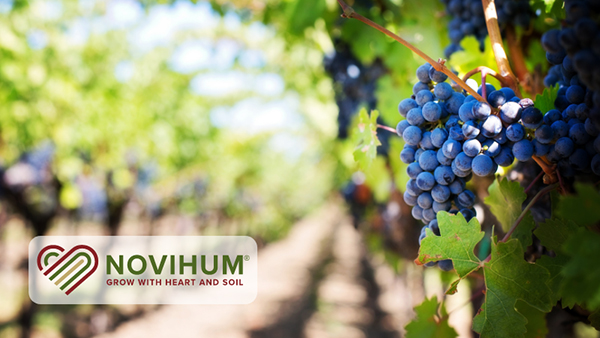Compound Interest Percolating Around Power of Hops

Due to the unique environment and soil, hops grown and harvested in Florida have their own distinct aroma and flavor profiles.
Photo by Richard M. Smith
It’s unlikely that when you crack open a cold one that you think about beer’s chemistry. Beer, a bevy of chemical reactions, doesn’t require an advanced education in biochemistry to enjoy, though it would immensely broaden the experience. Part of the craft beer movement strength is due to the fact that many consumers are educated on, not only, the process of brewing, but the chemical components of beer as well. These educated consumers, responsible for increased demand of locally produced agriculture and fresh brewing ingredients, are often themselves homebrewers or have experience with the craft and have helped establish the identity of many regional specific beer styles through their patronage (think NEIPA or West Coast IPA).
While Florida has no specific representative beer style, using only Florida-grown hops in all parts of the brewing process provides an opportunity and experience that cannot be replicated anywhere else in the world, thus is uniquely Floridian. Recent studies and analysis of Florida-grown hops indicate that local environmental conditions have the possibility of impacting (even enhancing) essential oil concentrations and therefore provide greater sensory experiences for craft beer consumers.
Flower of the Hour
Hops, female flowers of Humulus lupulus are a primary ingredient for beer, used in brewing for their potent contribution to bittering, flavor, and aroma. Before hops were the primary bittering agent of beer, brewers used a mixture of herbs and spices to counteract the sweetness of the malt. However, hops gained popularity largely due to their anti-microbial and preservation properties being that beer was an essential export and necessary cargo for long treks and voyages and kept the valuable beverage from spoiling.
The contribution of hops beyond storage stability eventually solidified their place as a primary ingredient in beer. Of the four primary ingredients (water, malt, hops, and yeast), hops are considered minor, as they are used in much smaller quantities than malts or water. Their importance lies within compounds contained in a substance produced by resinous glands on bracteoles of hop flowers called lupulin. Not one single compound, but an entourage (many of which have yet to be identified), is responsible for beer’s flavor and aroma. Research suggests that there could be more than 1,000 compounds secreted by lupulin glands responsible just for hops’ aromatic contribution of beer.
Additionally, the combination and consistency of these compounds are based on a variety specific response, which, before being consumed, can be influenced in a number of ways, including the brewing process, location of production, cultivation practices, plant age, harvest date, as well as postharvest activities such as processing and storage. The combined impact of all environmental conditions, production, and processing practices on the profile of hop characteristics is known as ‘terroir’ (ter’wär), a term of French origin often related to wine production.
With more than 97% of the U.S. hop crop originating in Idaho, Oregon, and Washington, and more than 75% of the U.S. hop crop produced in Yakima Valley, WA, the further away from traditional production areas, the greater the likelihood that a consumer has yet to experience the terroir they are desiring from their locally produced beers. Where using locally grown brewing ingredients can help meet this demand, understanding the importance of terroir can lead to greater and more unique resources, materials, and experiences available to growers, brewers, and craft beer lovers.

Hop lupulin glands produce the acids and essential oils that give each variety its unique identity.
Photo by Richard M. Smith
Bittering (Alpha and Beta Acids)
The bittering portion of hops is made up of the lupulin’s soft and hard resins. The soft resins contain the alpha acids (humulone, cohumulone, and adhumulone), which provide the majority of hop bittering and are of chief importance to brewers. The alpha acids are not water soluble until they undergo a process called thermal isomerization when added to boiling wort, a sweet aqueous solution made from grain extraction that allows them to impart their bittering factor.
The quantity and quality of iso-alpha acid (iso-humulone, iso-cohumulone, and iso-adhumulone) content is proportional to the total alpha acids, which are often presented on hop packaging as the percent weight of alpha acids. The amount of bitterness imparted by the iso-alpha acid is principally dependent on the length of time the alpha acids are boiled and the quantity of alpha acids in the hop.
Alpha acids are characteristic (ranging from 2% to 16% of dry weight) to each hop variety and content of the acids can differ among individual plants, growing regions, as well as between each harvest.
Beta acids (lupulone, colupulone, and adlupulone), also contained in the soft resins, are just as variable, but much less soluble than alpha acids. Beta acids do not go through thermal isomerization and therefore do not contribute much bitterness to wort during boil. The bittering effect of beta acids comes from oxidation during storage.
The oxidized products from beta acids can change perceived bitterness in a beer. This has a direct impact on aging and shelflife of hops and beer, respectively. The focus of hop research has been on alpha acids, thus much more on beta acid is left to be known.
 Flavor and Aroma (Essential Oils)
Flavor and Aroma (Essential Oils)
Like alpha and beta acids, essential oils of hops are secreted by lupulin glands of the hop plant in highest concentration at the bracts of hop cones. These oils, generally 0.5% to 2% of dry weight, also are impacted in a variety of ways including hop variety, production and processing environments, postharvest techniques such as storage, as well as the brewing process. Essential oils do not contribute to the bitterness of beer, but rather largely influencing flavor and aroma.
Being that they are extremely volatile, to capture the essential oil profile, brewers use aromatic hops at the end of boil or at post boil during fermentation, a technique known as dry hopping. There are many compounds in the essential oil of hops which contribute in known and unknown ways to flavor and aroma profile of beer.
The primary essential oils of concern to brewers are a combination of hydrocarbons, oxygenated hydrocarbons, and compounds containing sulphur. Important hydrocarbons, the largest fraction in essential oil, are myrecene, caryophyllene, humulene, and farnesene. These compounds — myrecene being the most abundant — are extremely volatile and are loss in great abundance during boil. However, during dry-hopping, the compounds leave perceivable traces. The oxygenated hydrocarbon fraction of the essential oil of hops include linalool, geraniol, and cintronellol and are created through exposure to oxygen during storage and boiling. They are often associated with strong floral and citrus flavor and aroma characteristics in beer through late hop additions.
Sulphur-containing compounds, formed through combination of hydrocarbons and sulphur during boil, are associated with off-flavors and unpleasant aromas such as onions, vegetables, and even skunk.
However, many of these compounds are lost to volatilization and are found in minute concentrations in beer, but can be increased due to later hop additions. Therefore, brewers may require a full profile hop analysis as it is vital in determining hop usage and contribution to beer flavor and aroma.










